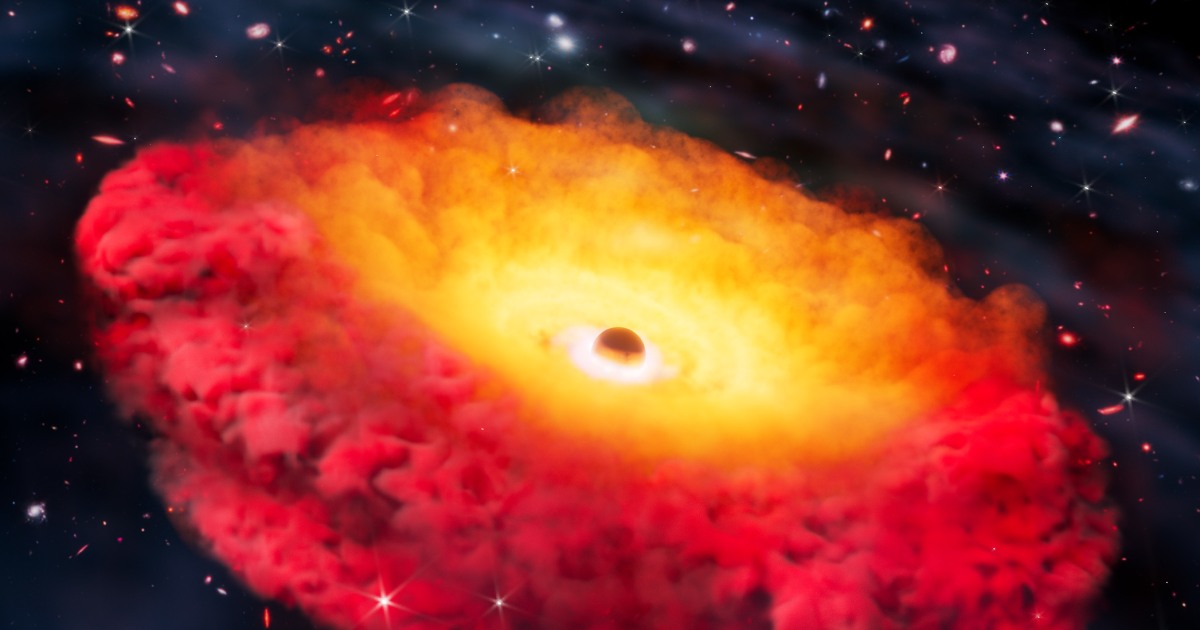States in quantum superposition are notoriously fragile, but researchers in China have reported creating such a state that lasted for a whopping 23 minutes and 20 seconds. While this record-breaking result is exciting in itself, the team believes that it could open new ways to high-precision measurements and even information processing for quantum computers – possibly even allowing scientists to …
Read More »Science
A black hole 300 million times bigger than the sun may be a portal to universe’s first days, scientists say
With spectroscopy, astronomers can look for telltale signs of stars, galaxies and other celestial objects. Black holes gobble up dust and matter around them, compressing and heating the material as it swirls around and falls into the black hole. All of that can be seen with spectroscopy, said study co-author Steven Finkelstein, a professor of astronomy at the University of …
Read More »Massive comet trail may have transformed Earth’s climate more than 12,000 years ago, tiny particles suggest
Scientists have found new evidence that a massive comet trail may have caused climate upheaval on Earth more than 12,000 years ago. Tiny particles detected in ocean sediment cores suggest that dust from a large, disintegrating comet entered Earth’s atmosphere around the beginning of the Younger Dryas event, a period of abrupt cooling that caused temperatures in the Northern Hemisphere …
Read More »Hubble Telescope gives us our best look yet at the interstellar comet 3I/ATLAS (video, photo)
Thanks to the Hubble Space Telescope, we now have the sharpest image yet of the interstellar visitor 3I/ATLAS, showing that it is clearly a comet, with a coma filled with dust particles and the first hints of a tail. Of course, 3I/ATLAS is no ordinary comet. Discovered on July 1, 2025 by the Asteroid Terrestrial-impact Last Alert System (ATLAS), 3I/ATLAS …
Read More »Scientists may finally know why the first stars in the universe left no trace
The first stars in the universe may have been much smaller than we thought, new research hints — possibly explaining why it’s so hard to find evidence they ever existed. According to the new research, the earliest generation of stars had a difficult history. These stars came to be in a violent environment: inside a huge gas cloud whipping with …
Read More »‘It’s a Mess’: A Brain-Bending Trip to Quantum Theory’s 100th Birthday Party
Those Who Don’t Know The evening before Fuchs and I had lunch, he had given the first official physics talk of the conference, a lightning review of QBism and a report on some conjectures in number theory that QBist thinking had helped him make recent progress on. His closing words at the end of the question-and-answer session following the talk …
Read More »A mysterious substance on Mars might be an undiscovered mineral
One way scientists study planets is by looking at the minerals on their surfaces. They can tell us a lot about how worlds form. Scientists have been looking at unusual layers of iron sulfates on Mars, and these layers may represent a whole new mineral. Janice Bishop, a research scientist at the SETI (Search for Extraterrestrial Intelligence) Institute and NASA …
Read More »Possible Planet Spotted Around Alpha Centauri A by NASA’s James Webb Telescope – The New York Times
Possible Planet Spotted Around Alpha Centauri A by NASA’s James Webb Telescope The New York Times New signs found of giant gas planet in ‘Earth’s neighbourhood’ BBC A planet from the Avatar movies may exist in real life NPR James Webb Space Telescope spots a potential new exoplanet just 4 light-years away from Earth Space Worlds Next Door: A Candidate Giant Planet Imaged in …
Read More »New study explains how a hot blob of rock came to sit under New Hampshire
Facebook Tweet Email Link There’s a giant blob of incredibly hot rock beneath New Hampshire — and it may be part of the reason the Appalachian Mountains are still standing tall, according to new research. It has, however, been slowly moving and is on course for New York in the next 15 million years. This hot rock blob, called the …
Read More »Jupiter and its 4 largest moons will line up in the sky on Aug. 8. Here’s how to see the ‘parade’
The predawn hours of Aug. 8 present a perfect opportunity to see Jupiter’s four largest moons line up next to the “King of the Planets” as it voyages through the stars of the constellation Gemini. Stargazers in the U.S. will see Jupiter rise above the eastern horizon roughly two hours before sunrise on Aug. 8, with Venus visible as a …
Read More »







